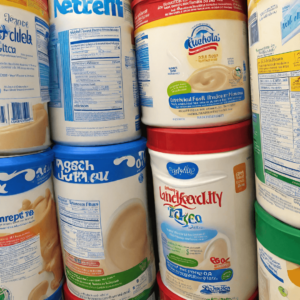The New York Times Takes Legal Action against OpenAI and Microsoft
The New York Times, one of the world’s most renowned newspapers, has recently filed a lawsuit against OpenAI and Microsoft, alleging copyright infringement. The lawsuit comes as a result of concerns raised by the newspaper regarding the use of its content by OpenAI’s language model, GPT-3, and Microsoft’s software, which reportedly generated articles resembling the style and tone of The New York Times. This unprecedented legal battle raises important questions about the boundaries of technological advancements and the protection of intellectual property. In this article, we will delve into the details of the lawsuit, explore the implications it holds for the future of artificial intelligence (AI), and consider the broader implications for the news industry.
1. The Allegations: A Violation of Copyright Law
The New York Times claims that OpenAI and Microsoft have violated its copyright by using its articles as a training dataset for the GPT-3 language model. GPT-3 is an advanced AI system developed by OpenAI that uses deep learning to generate human-like text. The software created by Microsoft, which allegedly made use of GPT-3, generated articles that closely resembled The New York Times’ distinctive style and tone, leading the newspaper to file the lawsuit.
2. OpenAI’s Response: Algorithms and Responsibility
OpenAI, known for its commitment to responsible AI development, has responded to the lawsuit by asserting that the company has not used specific datasets, like The New York Times, to train GPT-3 directly. Rather, they claim that the model was trained on a large corpus of publicly available text from the internet. OpenAI maintains that their algorithms are designed to generalize information and generate original content rather than infringe upon copyrighted material intentionally.
3. Microsoft’s Role: Partner or Accomplice?
Microsoft, a technology giant and a long-standing collaborator of OpenAI, has found itself on the opposite side of the courtroom in this legal battle. The software developed by Microsoft, allegedly utilizing GPT-3, allegedly produced articles that mimic The New York Times’ style. The company’s involvement in the lawsuit raises questions about the responsibilities of technology corporations in ensuring the ethical use of AI.
4. The Implications for AI Development
This lawsuit is not simply about copyright infringement; it also underscores the challenges faced by AI developers when it comes to training models and generating original content. Although OpenAI claims to use publicly available data, the ability of GPT-3 to imitate the style of well-known news outlets highlights the potential for misuse or even manipulation of information. As AI continues to evolve, it becomes crucial to strike a balance between innovation and protecting intellectual property.
5. The Future of AI and Journalism
The legal battle between The New York Times, OpenAI, and Microsoft raises important questions about the future of journalism in the age of AI. While advancements in AI offer new possibilities for the news industry, they also present ethical dilemmas that demand careful consideration. Can AI-generated content ever truly replicate the depth and nuance of human journalism? How can news organizations protect their intellectual property in the face of increasingly powerful AI technologies?
6. Balancing Innovation and Regulation
As the lines between human-generated and AI-generated content blur, it is imperative to find a balance between innovation and regulatory measures. The New York Times’ lawsuit serves as a reminder that safeguards need to be put in place to protect the intellectual property of news organizations, while also allowing for advancements in AI. Striking this balance is essential to the healthy growth of AI, as it ensures that technological progress does not come at the expense of creativity and originality.
7. The Role of OpenAI and Microsoft
The involvement of OpenAI and Microsoft in this lawsuit shines a light on the responsibilities of AI developers and the role they play in upholding ethical standards. AI development should not only prioritize technological advancements but also consider the legal and ethical implications of the algorithms being created. It is vital for these companies to take proactive steps in ensuring that their AI models do not violate copyright laws or infringe upon the intellectual property of others.
8. Collaboration and Legal Frameworks
The legal battle between The New York Times and two tech giants like OpenAI and Microsoft highlights the need for collaboration between news organizations and AI developers. By fostering dialogue and establishing legal frameworks, news outlets and AI companies can work together to ensure that AI technologies are used responsibly and do not compromise the integrity of journalism. This collaboration can lead to advancements that benefit both the news industry and society as a whole.
9. Broadening the Conversation: Industry-Wide Discussions
The New York Times’ lawsuit has started a conversation that extends beyond the boundaries of this particular case. It has prompted a broader discussion about the implications of AI in the field of journalism and the ethical responsibilities associated with its use. It is essential for the industry as a whole to engage in these discussions, exchanges ideas, and establish guidelines to navigate the intersection of AI and journalism effectively.
10. Conclusion
The lawsuit filed by The New York Times against OpenAI and Microsoft over the alleged copyright infringement raises critical questions about the boundaries of AI technologies and the protection of intellectual property. It emphasizes the need for collaboration, dialogue, and the development of legal frameworks that strike a balance between innovation and the preservation of original content. As AI continues to develop, it is crucial to address the ethical dimensions involved and ensure that technology serves the greater good while respecting the rights of content creators.
FAQs
Q1. What is GPT-3?
GPT-3 refers to OpenAI’s advanced language model that utilizes deep learning techniques to generate human-like text. It has gained attention for its ability to mimic various writing styles, including that of The New York Times.
Q2. What are the implications of this lawsuit for AI development?
This lawsuit highlights the challenges faced by AI developers in terms of training models and generating original content without infringing on copyrighted material. It underscores the need for responsible AI development and the establishment of legal and ethical frameworks.
Q3. How can news organizations protect their intellectual property in the age of AI?
News organizations must collaborate with AI developers to establish legal frameworks that protect their intellectual property rights. By fostering dialogue and engaging in discussions, guidelines can be established to safeguard original journalistic content.
Unexpected Consequences: Can a Bad Fall Lead to a Transient Ischemic Attack?
Limiting Hospital Visits: Spartanburg Regional Urges Responsible Decision-Making

